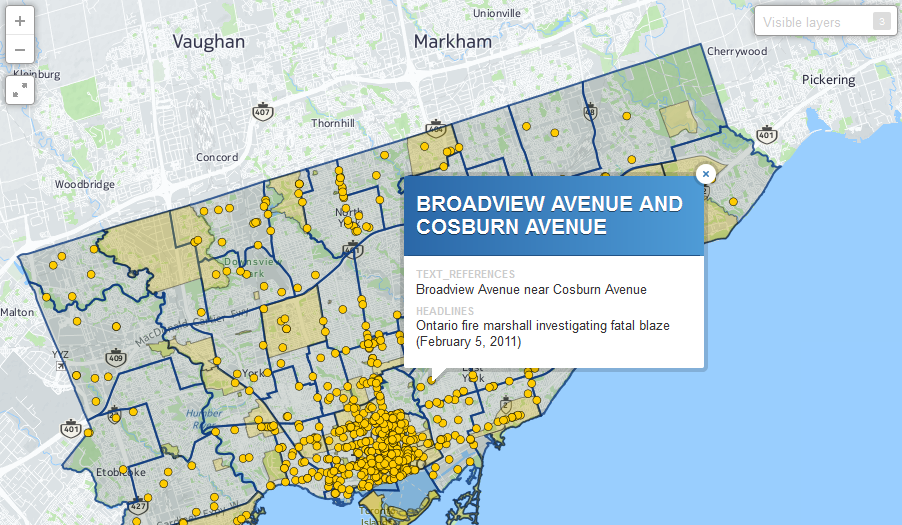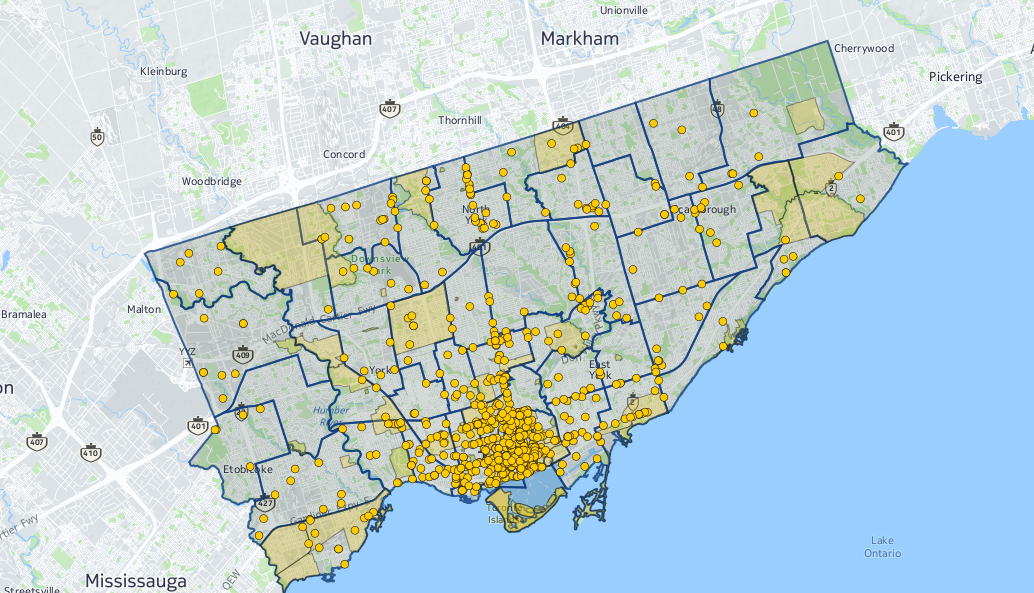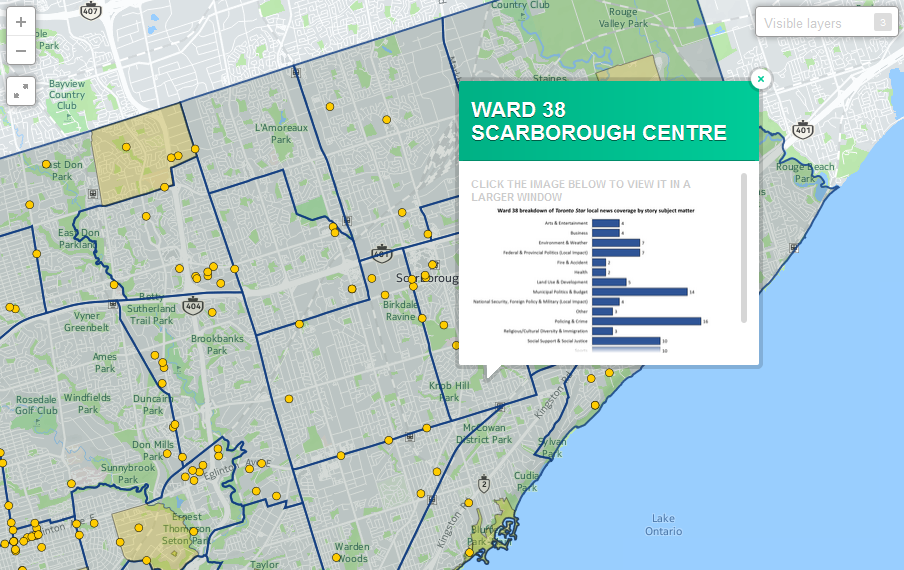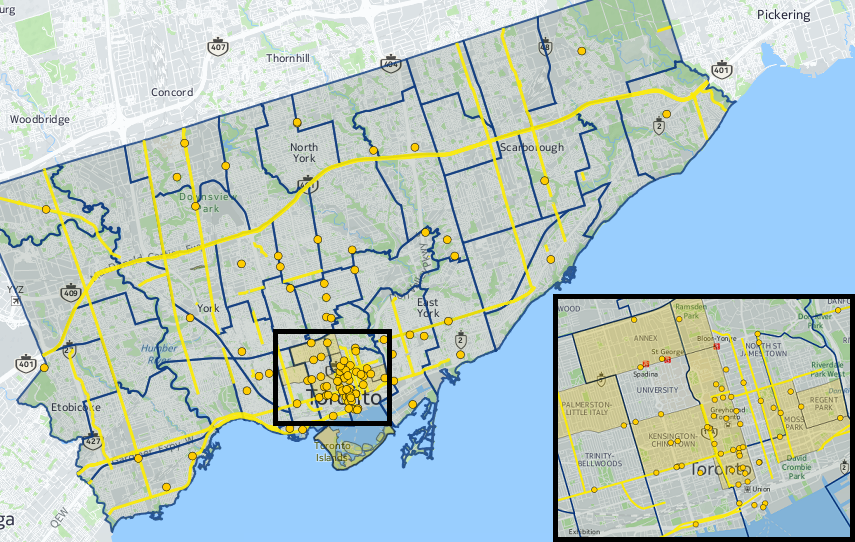By ILINA GHOSH
Staff Reporter
Toronto residents who are concerned about how their neighbourhoods are portrayed in the news can now test their perceptions of news coverage against the reality.
The Local News Research Project at the Ryerson University’s School of Journalism has launched online interactive maps that allow residents in different city wards to explore in detail how their communities are depicted in the news.

“[The maps] allow people to test what their perception of the news is and what the reality is and see if the two coincide,” said April Lindgren, an associate professor in the School of Journalism and the project’s principal researcher. The maps give the public access to data the research project collected on local news reporting by the Toronto Star and the user-driven local news website OpenFile.ca.
Residents can use the maps to get an overall sense of where news in the city is – and isn’t – covered; compare patterns of local news coverage by two different news organizations; examine the geographic patterns of reporting on crime, entertainment and other major news topics; and find out what kind of news is covered in each of the city’s wards.
“The patterns are interesting because they show a lot of coverage of the downtown neighbourhoods and central Toronto and as you go away from the centre of the city, you see less and less reporting overall in more far-flung neighbourhoods… This suggests there might be lots of opportunities to do stories in those other areas outside of the core,” Lindgren said.

The maps are based on the Toronto Star’s local news coverage published on 21 days between January and August 2011, a sample that is large enough to be considered representative of a whole year. The data for OpenFile.ca, which suspended publishing in 2012, was collected for every day between January and August 2011.
“While the maps capture only a snapshot of news coverage at a fixed point in time, they nonetheless demonstrate the importance of geospatial analysis in local news research,” Lindgren writes in an article on The Local News Research Project website.
They are “a powerful data visualization tool that allows members of the public to independently explore media portrayals of neighbourhoods and the extent to which some parts of a city are represented in the news while others are largely ignored.”
Lindgren says she decided to investigate how different neighbourhoods are portrayed in the news because of concerns periodically raised by residents and local politicians about how certain parts of the city are covered. Residents in Scarborough were outraged after disparaging references to Scarborough as “Scarberia” in a Toronto Star column; in the Jane-Finch area, concerns about crime-centred coverage led long-time resident and neighbourhood advocate Paul Nguyen to establish Jane-Finch.com, a local news website created to dispel negative stereotypes.

Drawing upon the same data used to create the interactive maps, Lindgren also produced a research paper that showed the city’s high-needs areas tend to appear infrequently in the news. Her research also demonstrated that the stories that are covered tend to be crime-related. As a result, she says, residents in the city’s disadvantaged communities worry “about how they’re portrayed and say that the media is negatively stereotyping their community.”
“There is research that suggests that the negative portrayals of neighbourhoods can affect how people perceive themselves and also how they are perceived by the outside.”
Studies have found, for instance, that job seekers from so-called ‘bad neighbourhoods’ are at a disadvantage when it comes to having their job applications considered, Lindgren said, citing a 2007 incident when a young, black university student from Toronto’s Malvern area was described as a “ghetto dude” in an email mistakenly sent to him by the Ontario government employee dealing with his job application.
“These potential effects of geographic stereotyping aren’t imagined,” Lindgren said.

Other studies have suggested that negative media depictions of particular neighbourhoods can become a self-fulfilling prophecy because they shape outsiders’ perceptions of an area. The stigmatization of a community can also be internalized by its residents, leading to further problems. Researchers have suggested, for example, that residents who believe they live in a troubled areas distance themselves from other residents, do not invest time and effort in improving their neighbourhoods, and instead focus on moving away. The resulting lack of cohesion and high turnover rate leave these communities even more vulnerable to crime and other problems.
